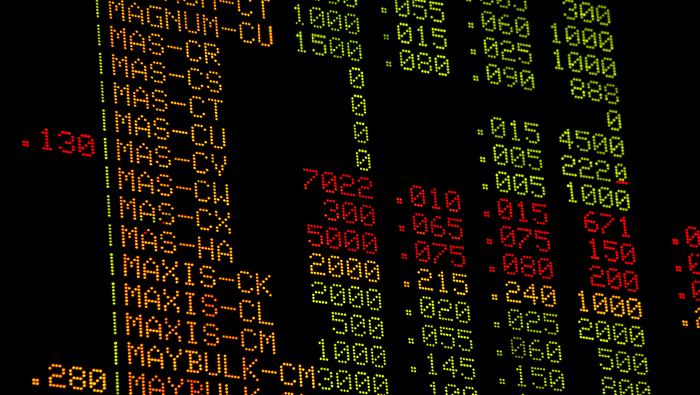
There are many benefits to investing in silver options, but it can also result in large losses. Although silver is seen as a safe haven, the market is volatile and investors can lose a lot of money if they aren't careful.
Silver futures are contracts that can be exchanged between two parties. They allow speculators take advantage of favorable price changes to protect and grow their wealth. Silver futures can also be traded on global exchanges, such as the Tokyo Commodity Exchange and the New York Mercantile Exchange.
Although silver futures can be traded in a wide variety of sizes, the typical contract is either a 1,000-ounce or a 5,000-ounce contract. These contracts are quoted in dollars and cents per troy ounce. They are traded on New York Mercantile Exchange's COMEX Division.

Silver futures traders can take advantage of leverage. Leverage allows traders to take on positions larger than their capital. However, leverage can cause rapid losses. Inexperienced market participants should carefully consider their risk profile and their preferred time horizon before entering the market.
Producers and portfolio managers can also use silver futures to hedge price risk. The difference between the spot price and the price of silver futures is determined using interest rates, the time until delivery and the strength market demand for immediate physical deliveries.
Some silver futures contracts may be traded in OTC (over the counter) markets, where prices can be negotiated directly between participants. The daily benchmark price is used as a benchmark to measure trading activity in the spot market. It is also used in producer agreements.
Speculation is another type of silver futures trading. This involves investors who believe the silver price will rise over time. Traders usually buy futures contracts to lock in a price for a specific amount of silver in the future.

Silver futures have a high risk of losing their investments, but can still prove to be useful for hedgers as well as speculators. They protect against price swings and decrease their risk of loss which is generally higher in the actual market. An investor can have a silver futures contract that gives them two positions: a long or short. The long position is an obligation for the seller to take delivery of physical metal on a specific date. The short position is an obligation to sell the physical metal to the buyer at a predetermined price, usually at least $10 per ounce.
It is important to be cautious when using leverage in futures markets. Even though it can help them to have a larger position in the futures market, they can lose a lot of money due to the leverage. Experts recommend that novice traders avoid futures trading.
Before investors can trade in silver futures, they must pay a margin. The amount varies depending on the exchange. This margin is used to pay for futures contracts, and it gives the investor technical ownership over the silver. The margin must be paid up front, and the investor must pay a percentage of each transaction.
FAQ
How do I invest on the stock market
You can buy or sell securities through brokers. A broker buys or sells securities for you. Trades of securities are subject to brokerage commissions.
Brokers often charge higher fees than banks. Banks will often offer higher rates, as they don’t make money selling securities.
A bank account or broker is required to open an account if you are interested in investing in stocks.
A broker will inform you of the cost to purchase or sell securities. Based on the amount of each transaction, he will calculate this fee.
Ask your broker questions about:
-
You must deposit a minimum amount to begin trading
-
Are there any additional charges for closing your position before expiration?
-
What happens when you lose more $5,000 in a day?
-
How long can you hold positions while not paying taxes?
-
How much you can borrow against your portfolio
-
Transfer funds between accounts
-
How long it takes to settle transactions
-
How to sell or purchase securities the most effectively
-
How to Avoid Fraud
-
How to get help for those who need it
-
Can you stop trading at any point?
-
What trades must you report to the government
-
How often you will need to file reports at the SEC
-
whether you must keep records of your transactions
-
How do you register with the SEC?
-
What is registration?
-
How does it impact me?
-
Who must be registered
-
What are the requirements to register?
Stock marketable security or not?
Stock is an investment vehicle which allows you to purchase company shares to make your money. This is done through a brokerage that sells stocks and bonds.
Direct investments in stocks and mutual funds are also possible. There are actually more than 50,000 mutual funds available.
The main difference between these two methods is the way you make money. Direct investment allows you to earn income through dividends from the company. Stock trading is where you trade stocks or bonds to make profits.
Both of these cases are a purchase of ownership in a business. However, when you own a piece of a company, you become a shareholder and receive dividends based on how much the company earns.
Stock trading gives you the option to either short-sell (borrow a stock) and hope it drops below your cost or go long-term by holding onto the shares, hoping that their value increases.
There are three types of stock trades: call, put, and exchange-traded funds. Call and put options let you buy or sell any stock at a predetermined price and within a prescribed time. ETFs, which track a collection of stocks, are very similar to mutual funds.
Stock trading is very popular as it allows investors to take part in the company's growth without being involved with day-to-day operations.
Stock trading can be a difficult job that requires extensive planning and study. However, it can bring you great returns if done well. It is important to have a solid understanding of economics, finance, and accounting before you can pursue this career.
What is a "bond"?
A bond agreement between 2 parties that involves money changing hands in exchange for goods or service. It is also known by the term contract.
A bond is typically written on paper, signed by both parties. This document contains information such as date, amount owed and interest rate.
The bond is used when risks are involved, such as if a business fails or someone breaks a promise.
Bonds can often be combined with other loans such as mortgages. This means that the borrower will need to repay the loan along with any interest.
Bonds can also be used to raise funds for large projects such as building roads, bridges and hospitals.
It becomes due once a bond matures. When a bond matures, the owner receives the principal amount and any interest.
Lenders lose their money if a bond is not paid back.
Why are marketable securities Important?
The main purpose of an investment company is to provide investors with income from investments. It does this through investing its assets in various financial instruments such bonds, stocks, and other securities. These securities offer investors attractive characteristics. These securities may be considered safe as they are backed fully by the faith and credit of their issuer. They pay dividends, interest or both and offer growth potential and/or tax advantages.
The most important characteristic of any security is whether it is considered to be "marketable." This is how easy the security can trade on the stock exchange. A broker charges a commission to purchase securities that are not marketable. Securities cannot be purchased and sold free of charge.
Marketable securities can be government or corporate bonds, preferred and common stocks as well as convertible debentures, convertible and ordinary debentures, unit and real estate trusts, money markets funds and exchange traded funds.
Investment companies invest in these securities because they believe they will generate higher profits than if they invested in more risky securities like equities (shares).
Statistics
- Ratchet down that 10% if you don't yet have a healthy emergency fund and 10% to 15% of your income funneled into a retirement savings account. (nerdwallet.com)
- Even if you find talent for trading stocks, allocating more than 10% of your portfolio to an individual stock can expose your savings to too much volatility. (nerdwallet.com)
- For instance, an individual or entity that owns 100,000 shares of a company with one million outstanding shares would have a 10% ownership stake. (investopedia.com)
- US resident who opens a new IBKR Pro individual or joint account receives a 0.25% rate reduction on margin loans. (nerdwallet.com)
External Links
How To
How to create a trading plan
A trading plan helps you manage your money effectively. It will help you determine how much money is available and your goals.
Before you start a trading strategy, think about what you are trying to accomplish. You might want to save money, earn income, or spend less. You might consider investing in bonds or shares if you are saving money. You could save some interest or purchase a home if you are earning it. If you are looking to spend less, you might be tempted to take a vacation or purchase something for yourself.
Once you have a clear idea of what you want with your money, it's time to determine how much you need to start. This depends on where your home is and whether you have loans or other debts. It's also important to think about how much you make every week or month. The amount you take home after tax is called your income.
Next, you will need to have enough money saved to pay for your expenses. These expenses include rent, food, travel, bills and any other costs you may have to pay. Your total monthly expenses will include all of these.
You'll also need to determine how much you still have at the end the month. This is your net discretionary income.
You now have all the information you need to make the most of your money.
Download one from the internet and you can get started with a simple trading plan. Ask someone with experience in investing for help.
Here's an example: This simple spreadsheet can be opened in Microsoft Excel.
This is a summary of all your income so far. Notice that it includes your current bank balance and investment portfolio.
And here's another example. This was created by a financial advisor.
It will allow you to calculate the risk that you are able to afford.
Don't try and predict the future. Instead, focus on using your money wisely today.